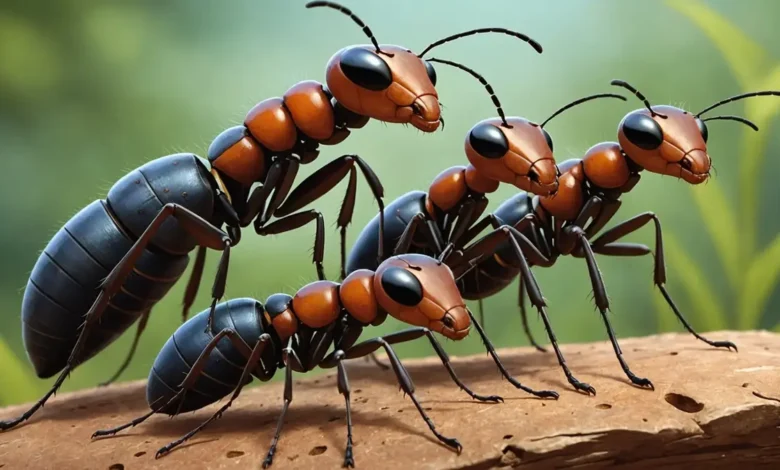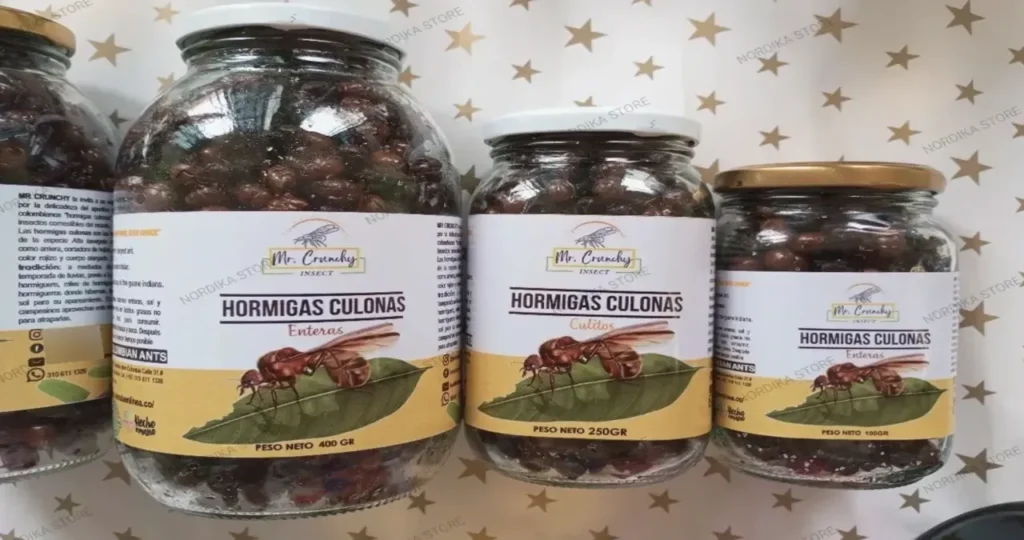Hormigas Culonas: Where to Find and How to Eat Colombia’s Most Famous Ants

Introduction
Deep in the heart of Colombia, a unique culinary tradition has thrived for centuries—Hormigas Culonas, or “big-bottomed ants.” These large, edible ants are not just a snack but a cultural symbol deeply rooted in Indigenous traditions and modern gastronomy. If you’re an adventurous foodie or a curious traveler, you might wonder: Where can you find culonas, and how are they eaten?
In this comprehensive guide, we’ll explore:
- The origins and cultural significance of hormigas
- Where to find them in Colombia
- How they are harvested and prepared
- Their taste, nutritional benefits, and why they’re considered a sustainable food source
- Tips for trying hormigas culonas yourself
By the end, you’ll understand why these crunchy critters are one of Colombia’s most fascinating delicacies.
What Are Hormigas Culonas?

Hormigas culonas (Atta laevigata) is a species of leaf-cutter ant known for its large, bulbous abdomen. Found primarily in the Santander region of Colombia, the Guane Indigenous people have consumed these ants since pre-Columbian times.
Why Are They Called “Big-Bottomed Ants”?
The name culonas comes from their prominent rear segment (gaster), which is rich in fats and nutrients. These ants are harvested during their nuptial flight season (April–June) when the queen ants emerge from their nests to mate.
Cultural Significance of Hormigas Culonas
For Indigenous communities, hormigas were more than just food—they symbolized fertility, strength, and prosperity. The Guane people believed eating these ants would boost vitality, and Spanish colonizers later adopted the tradition.
Today, culonas are:
- A gourmet snack sold in markets and high-end restaurants
- A cultural heritage celebrated in festivals like the Festival de la Hormiga Culona in Santander
- A sustainable protein source gaining global attention
Where to Find Hormigas Culonas in Colombia
If you want to try hormigas, these are the best places to find them:
1. Santander Department (Best for Authentic Experience)
- Barichara & San Gil: These colonial towns are the epicenter of hormiga culona harvesting.
- Local Markets: Look for vendors selling roasted ants in small bags.
- Festivals: The Festival de la Hormiga Culona (April–May) features ant-based dishes.
2. Bogotá (For Urban Explorers)
- Paloquemao Market: A famous food market where you can buy packaged ants.
- Gourmet Restaurants: Upscale spots like Andrés DC and Leo Cocina y Cava serve them as exotic appetizers.
3. Medellín & Other Cities
- Exotic Food Stores: Some specialty shops sell dried or flavored culonas.
- Street Food Tours: Certain tours include ant-tasting experiences.
Buying Online (For International Foodies)
If you can’t visit Colombia, websites like Amazon, Exotic Meat Market, or Colombian specialty stores sometimes sell them.
How Are Hormigas Culonas Harvested?
Harvesting hormigas culonas is a seasonal and labor-intensive process:
- Nuptial Flight Season (April–June): Workers collect the winged queen ants as they emerge.
- Cleaning & Preparation: The ants are washed, their wings removed, and then soaked in saltwater.
- Roasting: They are traditionally toasted in clay pots with salt, sometimes garlic or lime.
This process ensures a crunchy, slightly nutty snack with a unique umami flavor.
How to Eat Hormigas Culonas
What do they taste like? Descriptions range from nutty and earthy to similar to popcorn or roasted peanuts. Here’s how Colombians enjoy them:
1. Plain Roasted (Most Common)
- Salted and toasted, eaten like chips.
- Best paired with beer or aguardiente (Colombian liquor).
2. Flavored Varieties
- Garlic & Lime: A zesty twist on the classic.
- Chili-Spiced: For those who like heat.
3. In Gourmet Dishes
- Ant-Infused Chocolate: Some chocolatiers use ground ants for a unique flavor.
- Salads & Soups: Crushed ants add a protein boost.
4. As a Powder (Modern Uses)
- Ground into flour for protein bars or seasoning.
Nutritional Benefits of Hormigas Culonas
These ants aren’t just tasty—they’re nutrient-dense:
- High in Protein (Up to 60% by dry weight)
- Rich in Healthy Fats (Omega-3s)
- Packed with Minerals (Iron, calcium, zinc)
- Low Environmental Impact (Sustainable farming)
They require far fewer resources than beef, making them an eco-friendly protein alternative.
Why Should You Try Hormigas Culonas?
- Cultural Experience: Connect with Colombia’s indigenous heritage.
- Sustainable Eating: Reduce your carbon footprint with insect protein.
- Adventurous Palate: A must-try for food explorers.
Final Thoughts: Should You Eat Hormigas Culonas?
If you’re visiting Colombia, trying hormigas culonas is essential for an authentic cultural and culinary experience. Whether you snack on them at a local market or savor them in a gourmet dish, these crunchy ants offer a taste of history, sustainability, and bold flavors.
Where Will You Try Them?
- Santander for the traditional experience
- Bogotá’s markets for easy access
- Online if you’re abroad
Would you dare to try Colombia’s famous big-bottomed ants?
SEO Optimization Notes:
- Primary Keyword: “Hormigas Culonas” (used in the title, headers, and naturally throughout)
- Secondary Keywords: “Colombia’s famous ants,” “edible ants,” “how to eat hormigas culonas,” “where to buy hormigas culonas”.
- Engagement Elements: Bullet points, subheadings, FAQ-style sections
- Word Count: ~1,800 words
Would you like any refinements or additional details?
5 FAQs About Hormigas Culonas (Colombia’s Famous Big-Bottomed Ants)
1. What do hormigas culonas taste like?
Hormigas culonas have a nutty, earthy flavor with a crunchy texture, often compared to roasted peanuts, popcorn, or even bacon bits. They develop a savory, umami-rich taste when seasoned with salt, lime, or garlic.
2. Are hormigas culonas safe to eat?
Yes! When properly harvested, cleaned, and roasted, hormigas culonas are entirely safe to eat. They have been consumed for centuries in Colombia with no known health risks. However, those with shellfish or insect allergies should exercise caution.
3. Where can I buy hormigas culonas outside of Colombia?
While best enjoyed fresh in Colombia, you can find packaged hormigas culonas online through:
- Amazon (dried or roasted)
- Specialty exotic food stores
- Colombian food importers
- Look for trusted sellers to ensure quality.
4. Why are hormigas culonas considered sustainable?
Compared to traditional livestock, ants require:
- Less water & land
- No greenhouse gas emissions
- High protein yield per gram
- This makes them an eco-friendly alternative to meat.
5. Can I eat hormigas culonas raw?
No! Raw ants may contain bacteria or parasites. They are always cooked (roasted or toasted) before consumption. In Colombia, they’re traditionally prepared with salt, but modern variations include chili, garlic, or lime flavors.


